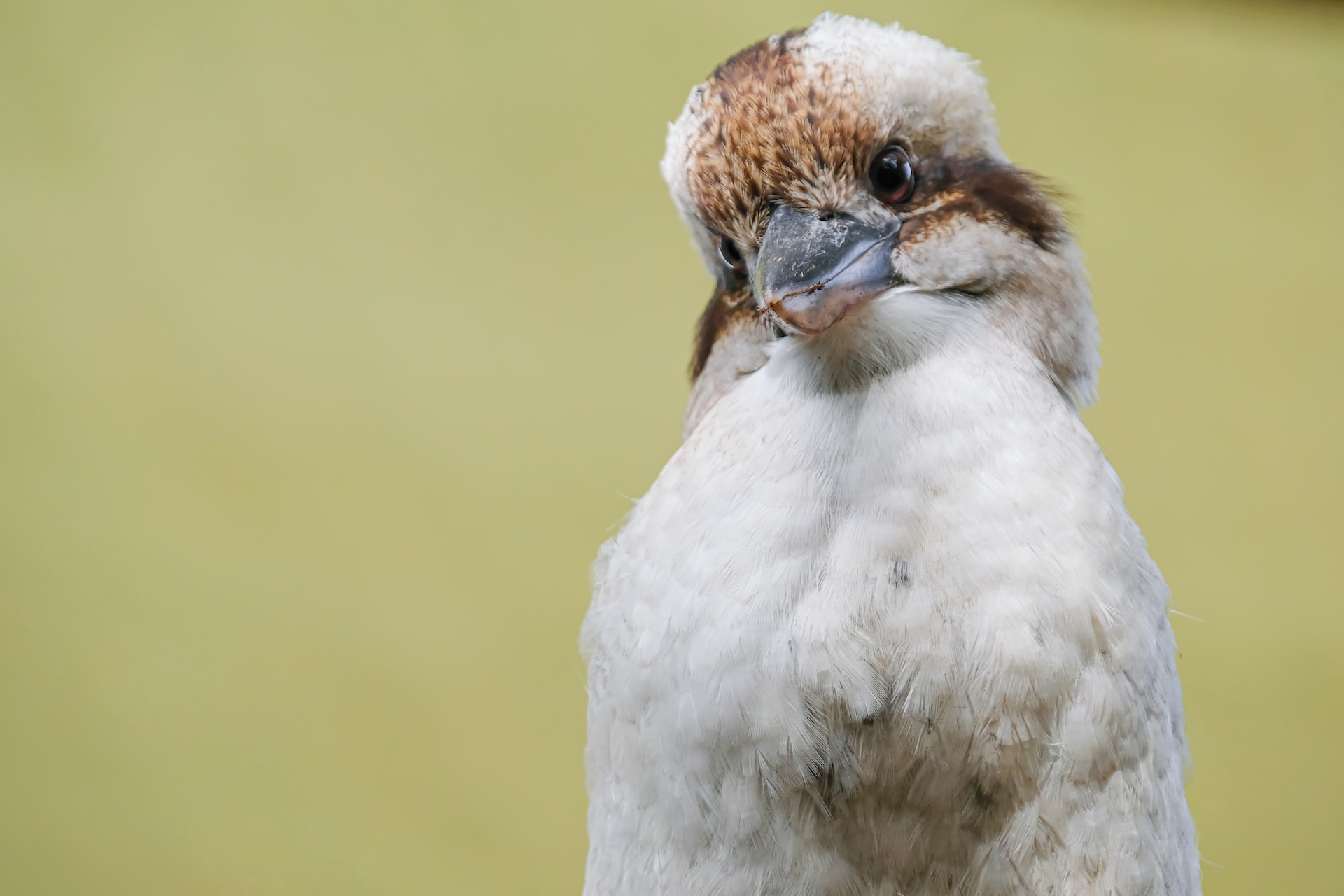
The Kookaburra: The Bushman’s Alarm Clock
We are reader-supported. When you buy through links on our site, we may earn affiliate commission.
When you think of Australia’s unique wildlife, kangaroos, koalas and wallabies often come to mind. But the kookaburra stands out among this distinct species, especially for its laugh-like call. Learn more about the captivating world of the kookaburra, examining its habits, cultural importance and role in the environment.
Not Just a Nickname
The kookaburra is a member of the kingfisher family that calls Australia and New Guinea home. Four species exist, but the laughing kookaburra — Dacelo novaeguineae — is the most renowned due to its hearty, loud call that resembles human laughter. This unique call has earned it the title “the bushman’s clock” because it often signals dawn and dusk.
Physical Characteristics and Habits
Sporting a large head and a short neck, the kookaburra has a stout build. Their body color varies from white to cream, and their wings showcase blue or dark green shades. These birds are carnivores, feeding primarily on insects, small rodents and snakes. They hunt by perching silently on a high point to scan for their prey. Upon spotting it, they dive and capture the creature with their robust beaks.
Kookaburras also have an unusual habit of smashing their prey against hard surfaces. This technique not only kills their food but also softens it. Even when humans give them soft meat, a kookaburra might instinctively try to bash it.
The Iconic Call of the Kookaburra
The kookaburra’s laugh-like call distinguishes it from other birds. To many, it sounds like human laughter, beginning with a soft chuckle and climaxing in a boisterous laugh.
This “laughter,” however, serves a purpose — it marks a kookaburra’s territory, warning rivals to keep away. While people commonly hear them at dawn and dusk, their laughter can break the silence at any time.
Cultural Significance
The kookaburra holds a special place in Australian culture. Indigenous folklore and tales frequently feature this bird. In some stories, the morning laughter of the kookaburra awakens the sky spirits to illuminate the day.
In today’s culture, various songs, movies and children’s rhymes feature the bird’s unique tune. The Australian silver kookaburra coin — minted since the 1990s — depicts the bird in various poses, celebrating its iconic Australian status.
The Challenges Facing Kookaburras
Rapid urban development, aggressive deforestation and the widespread clearing of land for agriculture have directly reduced the habitats of kookaburras. These activities shrink the spaces where kookaburras can live and breed, and deplete their primary food sources. As urban sprawl continues, more kookaburras fall victim to collisions with vehicles. Young birds in particular are unfamiliar with the perils of bustling roads and often suffer the most.
Pollutants — especially chemicals — infiltrate water and food sources. When farmers use pesticides to target insects, they might unintentionally affect kookaburras. These birds face a dwindling food supply or secondary poisoning from consuming contaminated prey.
Some well-intentioned individuals feed kookaburras bread or processed meat, leading to health complications. Moreover, frequent human interaction can diminish their natural wariness, making them more vulnerable to various dangers.
Australia has seen the introduction of several non-native species, some of which pose significant threats to kookaburras. For instance, predators like the European red fox and feral cats often target native birds.
As global temperatures shift and extreme weather events become more common, kookaburras face changing habitats. These environmental shifts can disrupt their food chains or even force them to relocate. In fishing hotspots, kookaburras can become tragic casualties, often getting ensnared in fishing lines or nets, which results in severe injuries or deaths.
Kookaburras rely on natural hollows for breeding. However, with the constant decline of these hollows, kookaburras now compete fiercely among themselves and with other species for these vital nesting spots.
Like all wild creatures, kookaburras are not immune to diseases or parasites. Any human-induced modifications to their environment can amplify the threats of these health issues.
Conservation Efforts for the Kookaburra
Addressing these challenges requires a multi-pronged approach. Focused conservation efforts, heightened public awareness and dedicated habitat restoration projects can collectively ensure kookaburras’ continued survival and prosperity in their native land.
Conservationists prioritize preserving and restoring eucalyptus forests and woodlands — the primary habitats of kookaburras. They actively counter deforestation and land clearing to ensure kookaburras have ample space for daily activities.
Organizations run awareness campaigns to educate the public about the significance of kookaburras in the ecosystem. These campaigns emphasize the detriments of feeding kookaburras foods outside their typical diet and highlight ways to mitigate threats like vehicle collisions. When these accidents do happen, dedicated wildlife organizations in Australia rescue and care for injured or orphaned kookaburras. After rehabilitating these birds, they are safely released into their natural habitats.
Scientists consistently monitor kookaburra populations to collect valuable data. This active surveillance helps them understand population dynamics, identify potential health threats and adapt conservation strategies accordingly. Additionally, government bodies draft and implement laws that shield kookaburra habitats. They restrict land clearing in kookaburra-rich regions and regulate the use of pesticides that could harm these birds.
Given the competition for natural nesting spaces, conservation groups offer kookaburras artificial nesting boxes. While kookaburras generally favor hollows, these boxes provide a suitable alternative in areas lacking nesting holes. Conservationists also collaborate with indigenous communities, drawing on their profound connection with the land and its inhabitants. This partnership taps into age-old knowledge and practices that enhance the conservation strategies for native species.
The government addresses threats posed by introduced species by managing and reducing their numbers. This ensures predators like feral cats and European red foxes pose a minimal threat to kookaburras.
The Way Forward for Kookaburras
The kookaburra symbolizes the wild landscapes of Australia, evoking visions of sunlit eucalyptus woods and the enigmatic outback. Its laughter gives people a taste of nature’s marvels and reminds them of the planet’s unique inhabitants. As organizations work towards peaceful coexistence, recognizing and valuing species like the kookaburra is crucial. People connect with the ancient Australian wilderness through its laughter, and understand protecting and respecting their surroundings is imperative.
The future of kookaburra conservation lies in a coordinated, multifaceted approach. This approach must involve experts, policymakers, local communities and the broader public. As people deepen their understanding of ecosystems, the importance of each species — including the kookaburra — becomes more evident.
Share on
Like what you read? Join other Environment.co readers!
Get the latest updates on our planet by subscribing to the Environment.co newsletter!
About the author
Rachel Lark
Rachel serves as the Assistant Editor of Environment.co. A true foodie and activist at heart, she loves covering topics ranging from veganism to off grid living.





